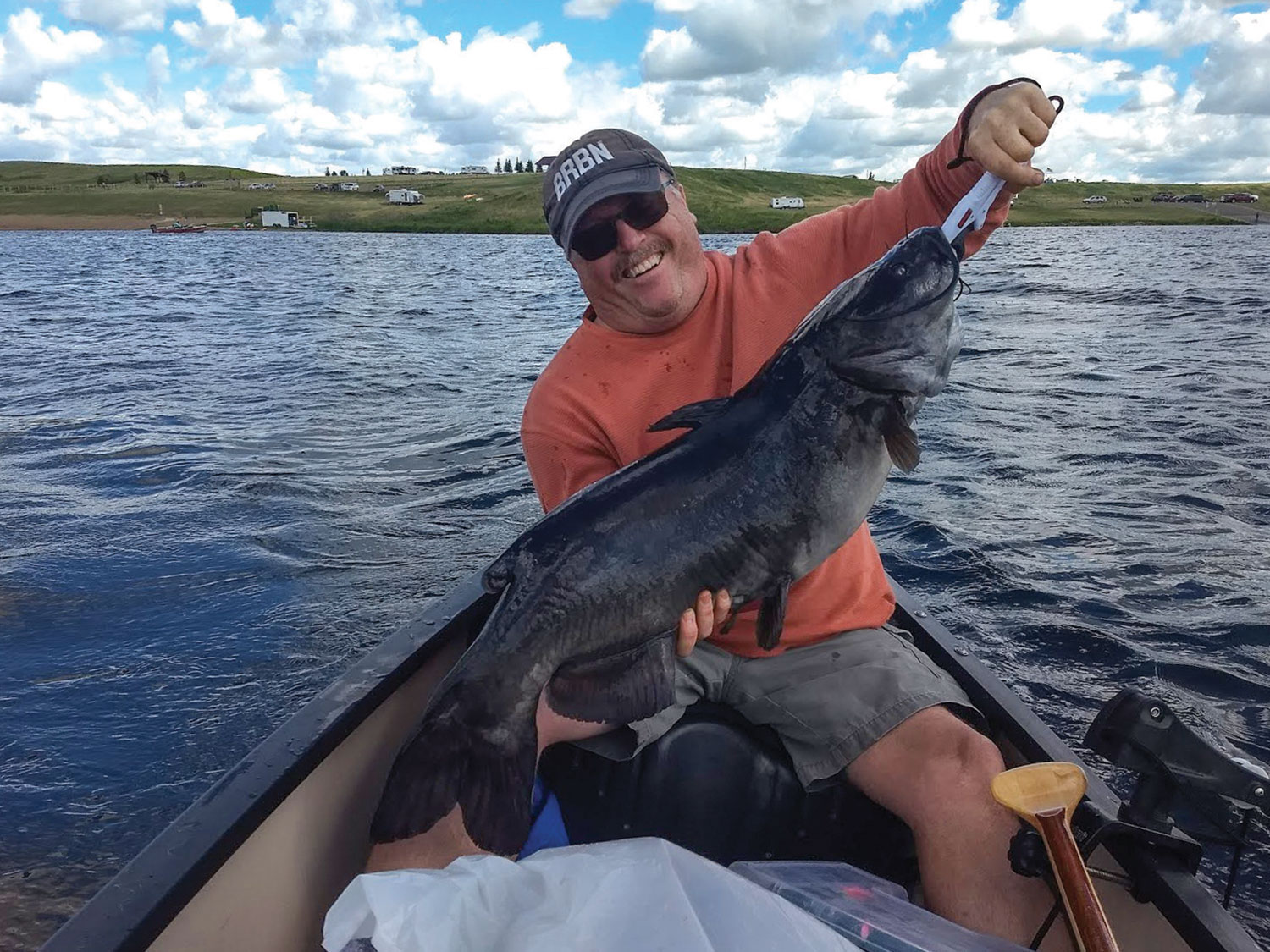North Dakota’s spring pheasant population index is up 15% from the same time last year, according to the state Game and Fish Department’s 2020 spring crowing count survey.
R.J. Gross, upland game management biologist, said the number of roosters heard crowing this spring was up statewide, with increases ranging from 1% to 18% in the primary regions holding pheasants.
“We entered spring with a larger breeding population compared to last year,” Gross said. “Hens should be in good physical shape for nesting season and cover should be plentiful from the residual moisture left from last fall.”
However, Gross said there is concern with drought conditions in the western part of the state, and whether insects will be available to chicks for brood rearing.
“I am hopeful for above-average chick survival due to the lush cover and predicted warm temperatures, but we can use some rain,” Gross said. “But we don’t want any severe weather events.”
While the spring number is an indicator, Gross said it does not predict what the fall population will look like. Brood surveys, which begin in late July and are completed by September, provide a much better estimate of summer pheasant production and what hunters might expect for a fall pheasant population.
Pheasant crowing counts are conducted each spring throughout North Dakota. Observers drive specified 20-mile routes, stop at predetermined intervals, and count the number of pheasant roosters heard crowing over a 2-minute period during the stop.
The number of pheasant crows heard is compared to the previous year’s data, providing a trend summary.
After two years of lower upland game populations, fewer hunters pursued these game birds last fall. With that said, North Dakota's 2019 pheasant and sharp-tailed grouse harvests were down from 2018, while the number of Hungarian partridge taken last year was similar to the year before, according to statistics compiled by the state Game and Fish Department.
Upland game management supervisor Jesse Kolar said the overall harvest was down despite slight increases in most population survey estimates.
“This was likely due to continued declines in hunter numbers and hunter days afield following lower population trends,” Kolar added. “We also still have lower densities of upland game birds in areas that traditionally had much of the harvest – pheasant numbers were still low in the southwest and sharptail numbers remained low in the badlands.”
Nearly 50,000 pheasant hunters harvested 256,800 roosters (down 25%) in 2019, compared to 59,400 hunters and 342,600 roosters in 2018.
Counties with the highest percentage of pheasants taken were Hettinger, Divide, Bowman, Williams and McLean.
In 2019, 14,000 hunters harvested 34,300 sharp-tailed grouse (down 34%), compared to 15,200 hunters and 51,800 birds in 2018.
Counties with the highest percentage of sharptails taken were Mountrail, Burleigh, Ward, Stutsman and McKenzie.
Last year, 11,900 hunters harvested 32,600 Hungarian partridge (up 5%). In 2018, nearly 12,500 hunters harvested 31,200 Huns.
Counties with the highest percentage of Huns taken were Mountrail, Ward, McLean, Williams and Divide.
The North Dakota Game and Fish Department completed its 73rd annual spring breeding duck survey in May despite the COVID-19 pandemic, and results showed an index of nearly 4 million birds, up 18% from last year.
Migratory game bird supervisor Mike Szymanski said despite most waterfowl surveys in North America being canceled this spring, Game and Fish was able to make adjustments to continue this long-term data set.
“Crews were turned into single person crews to make sure there was only one person in a vehicle, and we changed some of the route assignments to accommodate increased driving distances and workloads, but still maintained overlap with our fall wetland survey routes,” Szymanski said. “It was definitely quite a bit more work, and we are grateful that our crew members were up for the challenge.”
This spring’s wetland index was the sixth highest on record and the breeding duck index was the 13th highest, both are highs since 2014.
For the second year in a row the number of temporary and seasonal wetlands was substantially higher than the previous year, as figures show the spring water index is up 65% from last year. The water index is based on basins with water, and does not necessarily represent the amount of water contained in wetlands or the type of wetlands represented.
“Not surprisingly, we found really good wetland conditions during this year’s survey,” Szymanski said. “We had an unusually large amount of rain last fall, but have really been drying up since, especially in the western half of the state. The eastern half of North Dakota is still incredibly wet, and wetland numbers in the western half of the state are still in pretty good shape despite some drying.”
The breeding population survey results indicate numbers for all primary species, except redheads (down 12%), were stable to up from 2019 estimates. Ruddy ducks were up 87%, green-winged teal were at a record high and up 66% and blue-winged teal were up 58%. Mallards were unchanged. All other ducks ranged from down 2% (pintails) to up 40% (scaup) from last year’s numbers. All species, except pintails, which were down slightly, were well-above the 72-year average.
“Conditions that we have seen since 1994 seem to be the new normal with more precipitation and higher duck numbers,” Szymanski said. “This year’s ranking of our breeding population is a pretty good sign as our 13 highest duck counts are all within the last 26 years. When you start getting around the 4 million range, you are talking about very, very good duck numbers. So it is good to see us getting back to the middle of the road for the new normal.”
The July brood survey provides a better idea of duck production and insight into expectations for fall, Szymanski said, though hunting success is also influenced by bird movements before and during hunting seasons, and weather patterns during the fall migration.
Randall Gienger of Bismarck was fishing out of a canoe with a coworker on Harmon Lake June 19 when things got interesting.
Gienger, using an 1/8-ounce spoon tied to 10-pound test line that he uses to entice the lake’s trout, hooked a once-in-a-lifetime channel catfish.
“It was getting late in the morning when we decided to see if we could find some trout in the deeper parts of the lake, using the wind to blow the canoe across the lake, slowly trolling, letting the lines run long and deep,” Gienger said. “When he hit, I thought it was a snag at first, but when I felt the slow, strong tug, I knew I had something.”
The big fish made a couple of runs, one time rolling within 10 feet of the canoe, showing its big, black head.
“I was able to bring him up alongside the canoe, but we had a problem,” Gienger said. “We had no way of getting him into the canoe … no net.”
With the help of a loaner lip gripper from a nearby angler in a kayak, who also helped steady the canoe, Gienger was finally able to land the catfish.
“Unfortunately, we had no scale or tape measure,” Gienger said. “We estimated the length at 30-36 inches and 30-40 pounds. His mouth was big enough to fit my fist.”
Gienger said he’s not an avid angler and it had been a few years since he’d last wet a line.
“This is the biggest catfish I have ever seen, let alone caught,” he said. “And no one would have believed it if we didn’t have the pictures.”
Paul Bailey, North Dakota Game and Fish Department south central district fisheries supervisor, said when Harmon Lake filled in spring 2009, following completion of the dam in fall 2008, fisheries biologists found the lake full of small black bullheads that would likely be a detriment to the fishery if ignored.
“So, in spring of 2010, we trapped 502 adult channel catfish in Lake Oahe and stocked them in Harmon Lake because we’ve found that channel cats readily feed on black bullheads,” Bailey said. “We’ve had success with adult channel cats reducing bullhead numbers in places like Braddock Dam and the OWLS Pond next to Game and Fish Department headquarters in Bismarck.”
It appears Gienger’s big channel catfish has done its job of thinning the bullhead population at Harmon Lake and will continue to do so as the Bismarck angler released the fish after a few photographs.
While contest guidelines for the North Dakota Game and Fish Department's Watchable Wildlife Photo Contest have change little from previous years, photographers are reminded to follow the guidelines for submitting their work.
Photographers who want to submit photos to the contest should go the Game and Fish Department’s website at gf.nd.gov/photo-contest. Then it is a matter of providing some pertinent information about the photo and uploading it.
Doing so helps both with ease of submitting photos for the photographer and managing those images for Game and Fish staff.
The contest is now open and the deadline for submitting photos is October 2. For more information or questions, contact conservation biologist Patrick Isakson at pisakson@nd.gov.
The contest has categories for nongame and game species, as well as plants/insects. An overall winning photograph will be chosen, with the number of place winners in each category determined by the number of qualified entries.
Contestants are limited to no more than five entries. Photos must have been taken in North Dakota.
By submitting an entry, photographers grant permission to Game and Fish to publish winning photographs in North Dakota OUTDOORS, and on the Department’s website.
Hunters are reminded the pronghorn application deadline is August 5 and the deadline for swan permits is August 12.
Bihrle Retires, Freeman Fills Position
Longtime employee Craig Bihrle (left) retired in June after nearly 34 years with the Department. Bihrle started his career in 1986 as the associate editor of North Dakota OUTDOORS. In 1999, he was named communications supervisor, the title he held until his retirement.
Greg Freeman (right), the Department’s news editor since 2001 and with the agency since 1991, has filled Bihrle’s position.





